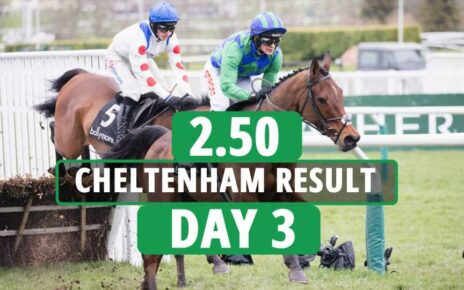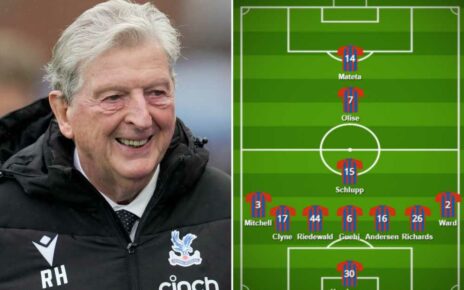THERE was a buzz in the air at the big meetings at Cheltenham and Doncaster at the turn of the year, and you can bet Ascot wasn't free of them either.
And it was not because of an over-excited crowd, but a team of drones hovering overhead beaming live pictures to in-running punters.


The airborne devices are causing racecourses a massive headache – but for the drone operators business is booming.
According to one pro punter, there are up to six ‘firms’ of drone operators currently raking it in across the country – and one even pays an elderly woman to let them operate from her back garden.
The outfits charge up to £60 per meeting for punters wanting access to the near-instant pictures provided by the drones – giving them a huge advantage on Betfair’s in-running markets.
As many as 150 to 200 punters will pay for the service at a quiet midweek meeting, meaning operators can theoretically earn up to £10,000 per fixture – and these numbers grow significantly at weekends.
Punters who pay for the service – which is currently legal – can access the drone footage through an app, giving them a crucial edge over those watching on TV.
The drone footage gives them a head-start of around a second on Racing TV viewers.
Most read in Horse Racing
ROYAL DRAMA 
Horse pulling Beatrice's carriage loses control after being spooked at Ascot

Platinum Jubilee Stakes latest reaction as 33/1 Naval Crown wins thriller

Royal Ascot guests pull out all the stops for the final day of the racing

Royal Ascot punter goes through the card to win over £300k from £5 bet
But their advantage over the pictures broadcast by Sky Sports Racing and ITV are even greater, with both channels running at a delay of around four to five seconds.
The firms are fully-licensed and the drones are said to carry a ‘James Bond-style’ camera system which costs up to £20,000 a pop.
Another pro punter said: "From what I’ve seen, they must get their gear from Q in some secret MI6 lab. It’s unbelievably high-tech."
The drone firms have a different set-up at each individual racecourse and they will never attempt to fly the drones from racecourse land.
DESPERATE MEASURES TO GET BETTING EDGE
At tracks such as Wolverhampton and Leicester, the operators pay local residents a decent chunk of cash to fly the devices from their properties.
One firm has brazenly flown their drone from a lay-by on the A141 just yards from Huntingdon, in full view of everyone at the track, while another has flown from a cherry picker overlooking Redcar.
And a betting industry insider described how one firm regularly pilots their drone from the back garden of an elderly woman who lives a short distance from Chelmsford City racecourse.
They are believed to pay her £300 per meeting and there are 49 meetings scheduled at Chelmsford this year.


With that sort of top-up to her pension, it’s no surprise she "provides them with tea and biscuits" throughout their stay!
It’s a double whammy for racecourses, whose media rights are being infringed by the drones beaming live pictures to punters at home.
Many tracks used to rent out boxes to in-running punters for thousands of pounds a year.
Now those bettors have either started using drone pictures or have packed it in completely, as they feel those punting with the instant footage gain an advantage with birds-eye-view camera angles.
CONSTANT RISK OF CARNAGE FROM CRASH
Plus, there is the constant risk of a drone crashing and causing injury to horses, jockeys or racegoers.
A drone crashed near Chepstow racecourse during last year's Welsh National meeting, and with as many as five drones appearing overhead at one time there is an increased risk of a mid-air collision.
Just last weekend, the Brentford vs Wolves match was halted for around 20 minutes because a drone was spotted overhead.
Premier League rules state that play must be stopped immediately if a drone is sighted, as officials fear it could pose anything from a terror threat to an attempt to broadcast live footage illegally.
Why can’t anyone stop them?
RACECOURSES have not been able to stamp out the use of drones – because the operators are not breaking any laws.
There are strict rules on where and when you can fly a drone, and you have to be properly licensed to operate the airborne devices.
The Civil Aviation Authority's code restricts drone pilots from flying over large crowds – they must be at least 50 metres away at all times.
But because of the wide-open spaces at British racecourses, the drones are not breaching this particular rule.
They must also stay at least 150 metres away from residential areas and must not fly above 400 feet, in order to stay clear of aircraft.
And they must fly high enough not to spook the horses, as it is against the CAA's code to disturb animals or wildlife.
The House Of Lords recently tried to get the government to impose further bans on drones – but it was rejected by the government.
There are no such rules in place in British racing, and racecourse chiefs have been left frustrated at attempts to get drone pilots to ground their aircraft.
There have been several instances of police being called only for the drone pilots to scarper – or to be let off as they are properly licensed.
Arena Racing Company – who run 16 racecourses in Britain – have been exploring possible legal action for several years, and their spokesman said drones were an “ongoing problem”.
So far, no legal proceedings have taken place, meaning the drones will continue to fly and the firms will continue to make sky-high profits.
FREE BETS GET OVER £2,000 IN SIGN UP OFFERS HERE
Commercial content notice: Taking one of the bookmaker offers featured in this article may result in a payment to The Sun. 18+. T&Cs apply. Begambleaware.org
Remember to gamble responsibly
A responsible gambler is someone who:
- Establishes time and monetary limits before playing
- Only gambles with money they can afford to lose
- Never chases their losses
- Doesn’t gamble if they’re upset, angry or depressed
- Gamcare – www.gamcare.org.uk
- Gamble Aware – www.begambleaware.org
Source: Read Full Article


